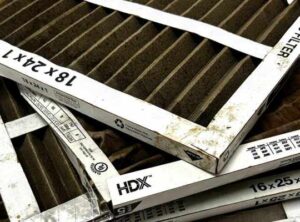Sustainability & Efficiency Guide
The Complete Guide to Eco-Friendly HVAC Filtration
Sustainable HVAC filtration, energy efficiency, and cost savings.
Introduction: Why Sustainability Matters in HVAC
Heating, ventilation, and air conditioning (HVAC) systems account for nearly 40% of energy use in buildings. At the same time, disposable filters contribute millions of pounds of waste to landfills each year. For homeowners, businesses, and facility managers, the challenge is clear: improve air quality without sacrificing sustainability or efficiency.
This guide explores how modern HVAC filtration—especially innovations like plasma-based reusable filters—reduces environmental impact while cutting costs. Whether you’re a homeowner, facility manager, or sustainability professional, you’ll find practical insights here.
 The Environmental Cost of Traditional HVAC Filters
The Environmental Cost of Traditional HVAC Filters
Landfill Waste: Disposable filters are replaced every 2–3 months, adding tons of synthetic waste annually.
Manufacturing Impact: Producing single-use filters consumes raw materials, packaging, and transportation resources.
Indoor Air Quality Trade-Off: High-MERV filters may restrict airflow, forcing HVAC systems to use more energy.

 Sustainable Alternatives—Plasma Filtration & Reusable Filters
Sustainable Alternatives—Plasma Filtration & Reusable Filters
Reusable Designs: Filters like Aireshield® can be cleaned and reused for over a decade, reducing waste streams.
Plasma Filtration Technology: Instead of trapping contaminants, plasma fields actively neutralize pathogens and agglomerate particles, boosting the efficiency of downstream filters.
Long-Term ROI: A single reusable filter can replace dozens of disposable ones, offering both eco-friendly performance and cost savings.

Energy Efficiency and Cost Savings
Sustainability isn’t just about protecting the planet—it’s about lowering operating costs.
Reduced Static Pressure: Plasma filtration clusters particles, allowing HVAC systems to run efficiently with lower resistance.
30% Energy Savings: Field testing shows systems with advanced filtration consume significantly less energy.
System Longevity: Preventing coil fouling and maintaining airflow reduces maintenance and extends HVAC life.

Sustainability Beyond Energy
Carbon Footprint: A household can cut several tons of CO₂ emissions annually by upgrading filtration.
Health & Sustainability Link: Cleaner air reduces respiratory illness, absenteeism, and reliance on energy-intensive medical interventions.
Circular Economy: Long-life reusable products reduce both upstream production and downstream disposal impacts.
Practical Tips for Homeowners & Facility Managers
Audit your current HVAC system’s filter replacement schedule.
Consider reusable or plasma-based filtration upgrades.
Clean reusable filters twice per year to maintain performance.
Track energy bills before and after upgrades to measure ROI.
Work with contractors trained in sustainable HVAC solutions.
Mini FAQ: Sustainability & Efficiency in HVAC
Yes—especially when paired with plasma technology, reusable filters can match or exceed high-MERV performance while reducing waste.
Typically, twice a year, though households with pets, pollen, or wildfire smoke exposure may need more frequent cleaning.
Yes. By reducing static pressure and preventing system fouling, advanced filters can cut energy use by up to 30%.
Look for UL 2998 ozone-free, ETL, and UL certifications to ensure safety and compliance.
Upgrade to Sustainable Air Filtration
Switching to a sustainable, efficient HVAC filtration system is one of the simplest ways to protect both your home and the environment.


Related Reading: Continue Your Sustainability Journey

Blog Posts → Pillar Page → Aireshield Shop/Product Page
